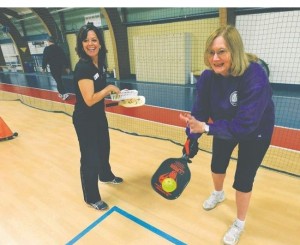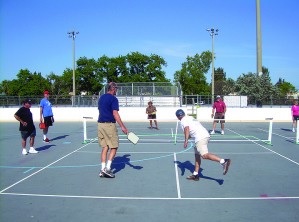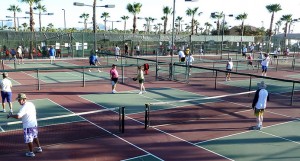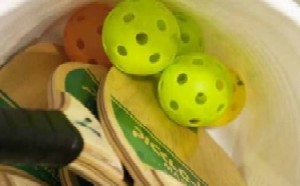Total Joint Replacements: Timeline and Considerations
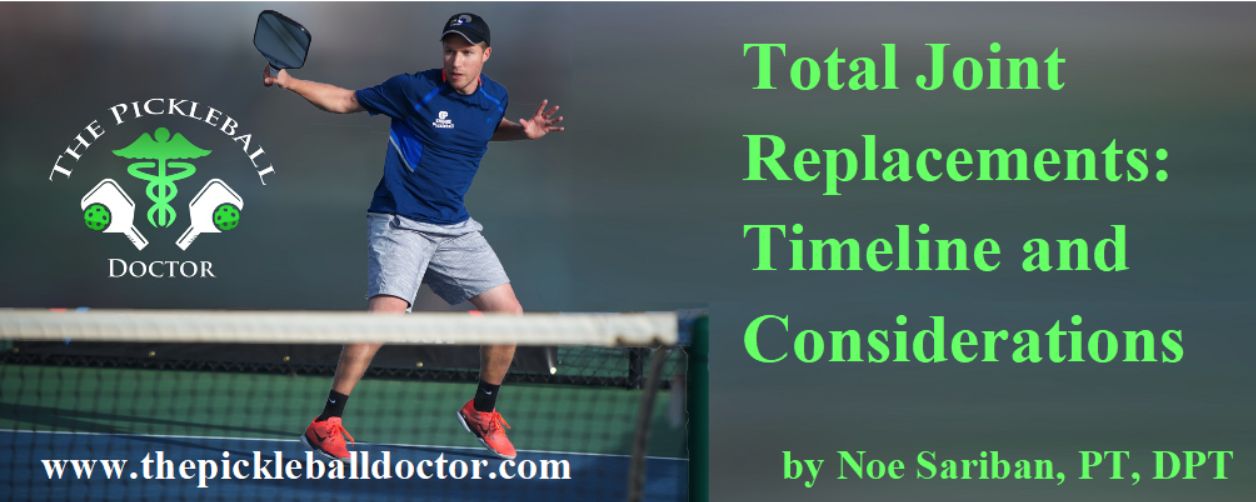
Total Joint Replacements (TJR) as a treatment for Osteoarthritis has become very common, with the prevalence of TJRs on the rise as baby boomers get older. The most common types of Total Joint Replacements are Total Hip Arthroplasties (THA) and Total Knee Arthroplasties (TKA). Both of these procedures have improved over the past decade, enabling people to return to higher levels of activity. Pickleball players are not exempt to knee and hip pain, and many are undergoing surgery in hopes of returning to the courts.
Everyone has heard of the phrase “bone on bone”, and this usually scares people, as this may be the first step towards a joint replacement. Joint replacements can be very effective, but don’t always have to be the first approach to your “bone on bone” problem. Here are some considerations prior to opting for surgery:
- You may not need surgery. Physical Therapy (PT) for mild to moderate osteoarthritis has shown to be very effective, and may extend one’s ability to remain active prior to needing surgery. Just because you are “bone on bone” does not mean you necessarily need surgery. Try PT first and then reassess your options.
- Maximize your fitness level by doing Pre-Hab: PT will increase your strength, mobility, flexibility, and motor control. All these will place you ahead of the curve for when you have surgery. The fitter a person goes into surgery, the better they will come out of it, making their rehab post surgery more successful.
- Joint replacement rehabilitation is not easy. The surgery is just the first step. Be prepared for hard work following your surgery if you are planning on returning to playing Pickleball. If you are not willing to commit to your rehab program, and work through some pain following the surgery, then this may not be the best option for you.
- While joint replacements aim to decrease your current pain, please know that there will be pain following the surgery. This will decrease over time, but can take anywhere from 3 to 6 months (sometimes 1 year) to resolve. Most people will get back to playing Pickleball at 6 months post op, but it could take up to a year to fully regain the necessary strength and motor control to play your best Pickleball without any pain.
If you have any questions, you can contact the Pickleball doctor at: thepickleballdoctor@gmail.com
Noe Sariban is a doctor of Physical Therapy, Certified Pickleball Teaching Professional through the IPTPA, and a 5.0 rated player sponsored by Engage Pickleball. Please visit www.thepickleballdoctor.com for more information on injury prevention and rehabilitation tips. Noe started his website to provide pickleball players around the world with a reliable and free source of information. Please like his Facebook page www.facebook.com/pickleballdoctor for updates and new information.
Don’t miss the next issue of Pickleball Magazine for a complete article by The Pickleball Doctor!

